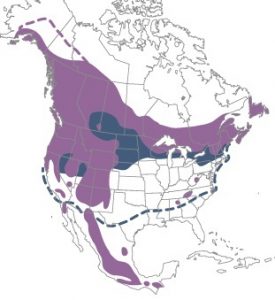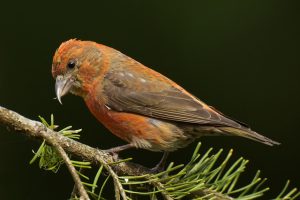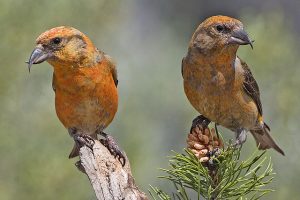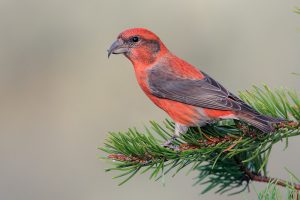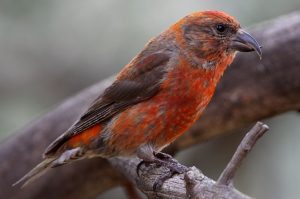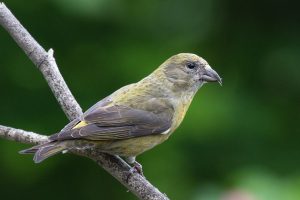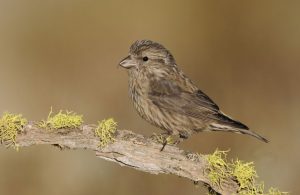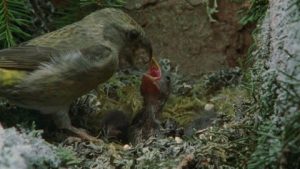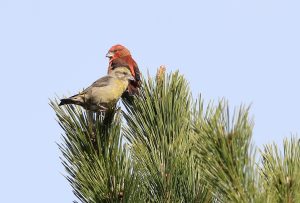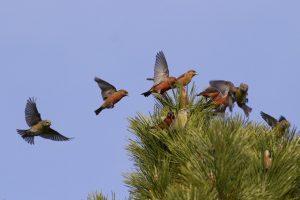Red Crossbill: Fascinating Finch Species with Unique Bill Shapes
Imagine standing in the heart of a dense forest, the sharp scent of pine and spruce filling the air. In the stillness, a faint chipping sound emerges—an unmistakable call that pulls your eyes upward. There, perched effortlessly on a tree branch, is the red crossbill. With its bill twisted into an almost impossibly perfect cross, this finch holds the secret to surviving in one of nature’s most unforgiving environments. But what’s behind that sharp beak? It’s more than just a quirky feature; it’s a finely-tuned tool for cracking open the tightest, toughest cones. The red crossbill isn’t just a bird—it’s a living testament to nature’s remarkable capacity for adaptation.
Masters of Seed Extraction
The red crossbill might be small, but its presence is larger than life. With a bill that crosses like the arms of a determined traveler, this finch species has mastered the art of survival in the wilds of coniferous forests. Found in the vast stretches of evergreen trees—from the towering spruces and hemlocks of North America to the douglas firs scattered across Europe—this bird has one mission: to feed, survive, and thrive in the world’s most resilient landscapes. But to understand this bird fully, you need to look beyond its bill. You need to explore its behavior, its diet, and its astonishing ability to navigate the unpredictable dance of cone crops in nature’s ever-changing cycles.
Scientific Classification
| Kingdom | Animalia |
| Phylum | Chordata |
| Class | Aves |
| Order | Passeriformes |
| Family | Fringillidae |
| Genus | Loxia |
| Scientific Name | Loxia curvirostra |
Typical Range and Habitat: The Wilderness that Shapes a Finch
The red crossbill’s range is as wild and untamed as the forests it calls home. From the soaring peaks of southern Alaska to the misty forests of the Pacific Northwest and the deep, shadowed pines of the Appalachian Mountains, this finch’s habitat is a vast network of evergreens. Its typical range stretches across North America and into parts of Europe and Asia, where the winds of the cold northern climes are met with trees that have stood for centuries. These towering trees—spruces, hemlocks, douglas firs—are the red crossbill’s domain, and they provide the essential lifeblood of its diet. The bird’s ability to roam the dense forests, following the movement of cone crops, speaks to its extraordinary adaptability.
The Crossed Bill: A Survival Mechanism Like No Other
No other feature defines the red crossbill more than its bill. It’s not just a bird with a peculiar beak—it’s a finely honed instrument, crafted by evolution to pry open the most stubborn of cones. Imagine the battle between this bird and the tightly sealed scales of a spruce cone. The red crossbill doesn’t flinch; with a deft twist of its crossed bill, it unlocks the cone’s hidden treasure—seeds, the heart of its diet. This bill shape isn’t just random; it’s a highly specialized tool adapted to the exact needs of the bird, allowing it to thrive in areas with limited food resources. And it’s not just one type of red crossbill—it’s an entire family of them, each with a bill shape uniquely suited to the types of cones they encounter in their specific range.
Quick Information
| Other Names | Common Crossbill, Crossbill |
| Size | 15 – 17 cm |
| Wingspan | 25-27 cm |
| Weight | 34-48 g |
| Color | Males: Brick-red/orange-red/yellowish plumage, dull-red head, dark brown eyes, dark grayish brown wings, black legs and feet, blackish-brown cleft tailFemales: Dull greenish-yellow/dull grayish plumage, yellow rump Juveniles: Grayish-brown plumage, whitish underparts |
| Distribution | North America including southern Alaska, Newfoundland, northern United States, and North Carolina; Central America, Northern Eurasia, northern Africa, Philippines, and south-eastern Asia |
| Habitat | Coniferous forests, including pines, spruces, firs, and hemlocks |
| Nesting | Often begins in January |
| Sounds | Call: Loud, persistent chip-chip, also a harsh “chewk” when excited or alarmed, “jip-jip-jip” ringing flight callSong: Trill sound followed by calls like that of Greenfinch |
| Adaptations | Beaks are curved at the tips, helping them to extract seeds from cones |
| Lifespan | Up to 16.1 years |
| Diet | Mainly conifer seeds, also feed on buds of some trees; berries, weed seeds, insects like aphids |
| Clutch Size | 3 to 4 eggs |
| Number of Broods | 1 to 2 per year |
| Incubation Period | 12 – 16 days |
| IUCN Conservation Status | Least Concern |
Diet and Feeding: The Art of Cone Cracking
In the harsh, unyielding forests of the north, survival hinges on what’s within the cones. For the red crossbill, this means a lifelong dance with spruce cones, hemlock buds, and the endless hunt for seeds. But it’s not a simple task. The seeds locked inside these cones are protected by tightly closed scales, and only the red crossbill’s unique crossed bill can pry them open. This feeding technique isn’t just functional; it’s a masterpiece of nature’s design. When the cone crops are plentiful, the red crossbill thrives, but when they dwindle, it’s time to move on. This adaptability is what sets the red crossbill apart—it follows the cones, moving wherever the seeds lead, ensuring that it can weather even the harshest seasons.
- Red crossbills feed almost exclusively on the seeds of conifer trees such as spruce, hemlock, and douglas firs.
- Their crossed bill is their greatest asset, allowing them to access seeds that other birds can’t.
- When cone crops are abundant, red crossbills are social, forming large flocks that sweep across forests in search of food.
Types of Red Crossbills: The Subspecies of a Survivor
Red crossbills aren’t a monolith; they come in various types, each uniquely adapted to different environments and cone types. It’s a fascinating example of how a single species can evolve in multiple ways to survive in different habitats. Some types have longer, more robust bills, suited for the thick cones of pine trees, while others have shorter bills better designed for smaller cones found in the Pacific Northwest. These variations in bill shape are not merely superficial; they’re the key to the red crossbill’s ability to survive in an ever-changing world. The types of red crossbills—ranging from those with powerful, heavy bills to those with delicate, slender ones—reflect the complex, adaptive nature of these finches.
Breeding and Nesting: A Life Built in the Trees
Nesting season for the red crossbill isn’t marked by a calendar—it’s marked by food. These birds will breed when the cone crops are plentiful, building nests in the branches of their favorite evergreens. Picture a female red crossbill, delicately weaving twigs, grasses, and feathers together to create a cozy home high above the forest floor. The nest is a fortress of protection, surrounded by the towering pines, and carefully crafted to house new life. And when the time is right, those eggs hatch, bringing forth tiny finches that will soon take to the skies, their own crossed bills beginning to form. It’s a cycle of life that follows the rhythm of nature, one that is finely attuned to the abundance of seeds.
Conservation and Lifespan: A Testament to Resilience
Despite the challenges of living in harsh, cone-deprived winters and unpredictable food sources, the red crossbill remains a resilient species. While their conservation status is currently of least concern, these birds are not immune to the effects of habitat destruction and climate change. Their ability to live up to 16 years in the wild, however, is a testament to their strength and adaptability. As long as the forests remain and the cones continue to bloom, the red crossbill will continue to thrive in the wilderness.
- After 18 to 22 days, the young leave the nest.
- The young are fed by the parents for around a month after hatching.
Interesting Fact
The species including its subspecies are the only birds in the world having crossed bills.
Closing Summary: A Remarkable Bird of Adaptation
The red crossbill isn’t just a bird—it’s an embodiment of nature’s ingenuity. With its crossed bill, it unlocks the mysteries of coniferous forests, revealing a world of seeds, survival, and stunning adaptations. From its wide range across evergreen forests to the varied types of red crossbills, this bird represents the beauty of nature’s resilience. Its life is a story of movement, survival, and a finely-tuned relationship with the world of cones—a true masterpiece of evolution.
References:
Published on November 7th 2016 by Mark Matzeldelaflor under Coniferous Forest Animals.
Article was last reviewed on 15th December 2024.


